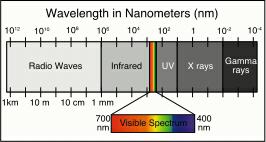 Some
studies of interstellar gas and dust can be performed here on Earth. For example,
we can determine the size and location of cold interstellar gas by performing
electromagnetic observations: clouds of interstellar gas are capable of producing radiation,
which is detected in the form of a 21-cm wavelength radio wave. However, this
radiation is extremely faint, and equipment sensitive enough to detect it was
not invented until 1951. Since then, researchers have been able to do extensive
research about interstellar gas, but these indirect measurements do not allow
for much study of individual particles' charges and abundances.
Some
studies of interstellar gas and dust can be performed here on Earth. For example,
we can determine the size and location of cold interstellar gas by performing
electromagnetic observations: clouds of interstellar gas are capable of producing radiation,
which is detected in the form of a 21-cm wavelength radio wave. However, this
radiation is extremely faint, and equipment sensitive enough to detect it was
not invented until 1951. Since then, researchers have been able to do extensive
research about interstellar gas, but these indirect measurements do not allow
for much study of individual particles' charges and abundances.
 For observers trapped within the magnetic field that surrounds the Earth, learning about the interstellar medium through direct observation of particles was quite difficult until the advent of satellites. Part of the reason that life was able to evolve on Earth is that the magnetic field (illustrated to the right) acts as a shield against high-energy charged particles, like certain cosmic rays. However, the shielding action that protects us also makes it nearly impossible for scientists to sample particles from the sun, interstellar space, and the galaxy as a whole.
For observers trapped within the magnetic field that surrounds the Earth, learning about the interstellar medium through direct observation of particles was quite difficult until the advent of satellites. Part of the reason that life was able to evolve on Earth is that the magnetic field (illustrated to the right) acts as a shield against high-energy charged particles, like certain cosmic rays. However, the shielding action that protects us also makes it nearly impossible for scientists to sample particles from the sun, interstellar space, and the galaxy as a whole.
If you would like to make a three-dimentional paper model of the Earth's magnetosphere, please visit this site. For a brief history of the study of the magnetosphere, visit here.
In 1958, the first American satellite, the Explorer 1, was launched. It sent back data about the radiation belts that surround the Earth, and this information sparked much debate as to the source of such high-energy radiation. Eventually, several sources -- solar and interstellar radiation included -- were identified, and there began the quest to study the sources as close to first-hand as possible. Now, many satellites -- including AMPTE, ACE, POLAR, SOHO, WIND (which carry instruments developed in part by current UNH researchers) and Ulysses -- have studied or are now studying interstellar matter. Indeed, the AMPTE mission was the first to discover the existence of pick-up ions; you may wish to view the movie on this subject. Many of these missions use a "time of flight" detector to determine the charge and size of particles that enter the detector. Knowing these properties, researchers can tell where a particle came from, how old it is, or even a little about its history. All of these facts help scientists put together a more complete picture of how our solar system and the galaxy have evolved.